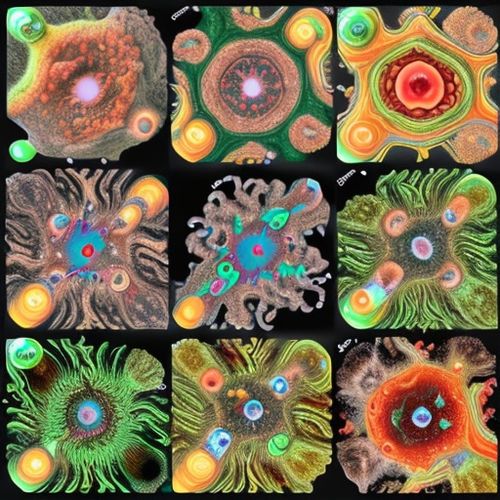The world of materials science is undergoing a quiet revolution, one that promises to reshape how we think about manufacturing, medicine, and even everyday objects. At the heart of this transformation lies 4D printing with shape memory materials – a technology that adds the dimension of time to traditional 3D printing. Unlike conventional 3D-printed objects that remain static after production, these smart materials can change their shape, properties, or functionality when exposed to specific environmental triggers.
What makes 4D printing truly remarkable is its ability to create objects that evolve. Imagine a stent that expands at body temperature, a pipe that adjusts its diameter based on water pressure, or furniture that assembles itself when exposed to sunlight. These aren't scenes from science fiction but real possibilities being explored in laboratories around the world. The secret lies in the sophisticated programming of materials at the molecular level, allowing them to "remember" their original shape and return to it when activated.
The science behind shape memory materials is as fascinating as its applications. These materials, often polymers or metal alloys, undergo phase transformations when subjected to external stimuli such as heat, light, moisture, or magnetic fields. Researchers have developed intricate methods to "train" these materials to adopt temporary shapes that can later revert to their programmed forms. When combined with 4D printing techniques, this allows for unprecedented control over an object's transformation sequence and timing.
Medical applications are pushing the boundaries of what's possible with 4D printed shape memory materials. Biomedical engineers are creating smart implants that can change configuration inside the body – expanding stents, self-tightening sutures, and even drug delivery systems that release medication in response to specific physiological conditions. These advancements could dramatically reduce invasive procedures and improve patient outcomes. The ability to print patient-specific devices that adapt to anatomical changes over time represents a significant leap forward in personalized medicine.
In the realm of consumer products, 4D printing promises to revolutionize how we interact with everyday objects. Researchers have demonstrated shoes with soles that adapt to different surfaces, clothing that changes its insulating properties based on temperature, and packaging that automatically adjusts to protect delicate contents during shipping. The potential for reducing waste and improving product longevity is substantial, as items could be designed to repair themselves or adapt to new uses rather than being discarded.
The aerospace and automotive industries are particularly interested in shape-shifting materials for creating more efficient, adaptive structures. Imagine aircraft wings that automatically adjust their shape for optimal performance during different flight phases, or car components that change their properties to absorb impact energy more effectively during collisions. These applications could lead to significant improvements in fuel efficiency and safety while reducing mechanical complexity.
Challenges remain before 4D printing becomes mainstream. Precise control over transformation timing and sequencing requires sophisticated material programming and printing techniques. The long-term durability of shape memory materials, especially when subjected to repeated transformations, needs further study. Additionally, the current high costs of specialized printing equipment and smart materials limit widespread adoption. However, as research progresses and scale increases, these barriers are expected to diminish.
Environmental considerations are driving interesting developments in biodegradable shape memory materials. Scientists are exploring natural polymers and composites that can perform shape-changing functions while remaining environmentally benign. This aligns with growing demands for sustainable manufacturing practices and could open up new applications in areas like environmental remediation, where temporary structures might be needed for clean-up operations before safely degrading.
The future of 4D printing with shape memory materials looks remarkably dynamic. As researchers gain better understanding of material behaviors at different scales and develop more precise printing techniques, we're likely to see increasingly sophisticated applications emerge. From infrastructure that repairs itself to adaptive robotics that can change form for different tasks, the possibilities seem limited only by our imagination. What's certain is that this technology will continue to blur the lines between the physical and digital worlds, creating objects that are far more responsive and intelligent than anything we've known before.
Educational institutions and research centers worldwide are racing to establish specialized programs focused on 4D printing technologies. This surge in academic interest reflects the growing recognition of shape memory materials as a transformative field. Students learning these skills today will likely pioneer applications we haven't yet conceived, pushing the boundaries of materials science into uncharted territory.
Investment in 4D printing technology has been growing steadily, with both government agencies and private companies recognizing its potential. Military applications for adaptive camouflage and reconfigurable equipment have attracted particular attention, while the healthcare sector sees enormous value in smart medical devices. As patents are filed and startups emerge, the competitive landscape is beginning to take shape, promising accelerated development in the coming years.
The artistic community has also embraced shape memory materials as a new medium for creative expression. Installations that change with the weather, sculptures that respond to viewer presence, and fashion that transforms throughout the day are just some examples of how artists are exploring this technology. This cultural dimension adds richness to the technical development, reminding us that innovation often flourishes at the intersection of science and art.
Looking ahead, the convergence of 4D printing with other emerging technologies like artificial intelligence and the Internet of Things suggests even more radical possibilities. Smart materials that can communicate, learn from their environment, or make autonomous decisions could redefine our relationship with physical objects. While ethical and safety considerations will need careful attention, the trajectory points toward a future where our material world becomes far more responsive and adaptive than we ever imagined possible.

By Thomas Roberts/Apr 19, 2025

By Michael Brown/Apr 19, 2025

By Victoria Gonzalez/Apr 19, 2025

By Benjamin Evans/Apr 19, 2025

By Eric Ward/Apr 19, 2025

By Emily Johnson/Apr 19, 2025

By David Anderson/Apr 19, 2025

By Olivia Reed/Apr 19, 2025

By Emma Thompson/Apr 19, 2025

By William Miller/Apr 19, 2025

By Laura Wilson/Apr 19, 2025

By Emma Thompson/Apr 19, 2025

By John Smith/Apr 19, 2025

By John Smith/Apr 19, 2025

By James Moore/Apr 19, 2025

By Michael Brown/Apr 19, 2025

By John Smith/Apr 19, 2025

By Noah Bell/Apr 19, 2025

By Emma Thompson/Apr 19, 2025

By Benjamin Evans/Apr 19, 2025